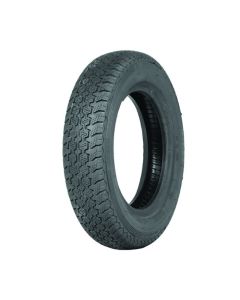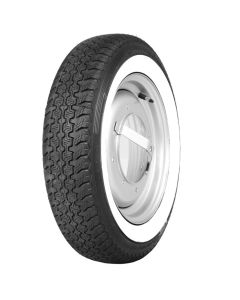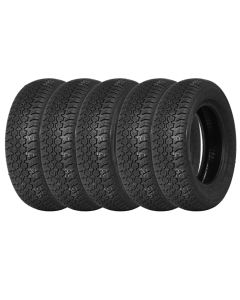Fiat 126 Tyres

1972 Mk1 Fiat 126
Fiat 126 1972–1980
- The first Fiat 126 models came fitted with 125 R12 Tyres Tyres. Later models moved up to 135 R12 Tyres.
- Our recommended tyre for the Fiat 126 is the 125SR12 PIRELLI CINTURATO CN54, a classic high-performance tyre designed specifically for compact classics like the Fiat 500.
- The 125 R 12 Michelin X is another good Fiat 126 tyre option.
- The ideal innertube for 125 R12 tyres is the Michelin 12C innertube.
- Some models were fitted with 135 R12 tyres, however, at the moment there is not a high-quality classic tyre made in this size. We can offer the 135 R 12 Camac NC80, but we would instead recommend fitting a 125 R12, or moving up to the low-profile 145/70 R12 Tyres.
- Our recommended 145/70 R12 tyre is the 145/70 R 12 PIRELLI CINTURATO CN54 or the 145/70R12 Michelin XZX. Both are high-quality period classic tyres with an S speed rating (rated for sustained speeds up to 112mph).
- The ideal innertube for 135 R12 and 145/70 R12 tyres is the Michelin 12CG innertube.

1972 Fiat 126 Advert
Fiat 126 History

Fiat 126 FSM
The Fiat 126, a two-door city car notable for its rear-mounted 0.6L, 2-cylinder engine. Produced between 1972 and 2000, it was introduced as the successor to the Fiat 500. Within its compact frame, it hosted an engine that generated 23 bhp at 4800 rpm and a torque of 39 N·m at 3400 rpm, connected to a 4-speed manual transmission powering the rear wheels.
Though it shared its wheelbase and some mechanical features with the Fiat 500, the 126 underwent changes to improve both safety and interior space. In 1977, its engine capacity increased to 652 cc, yet retained its 23 hp output while enhancing torque to 43 N·m. Between 1987 and 1991, the Fiat 126 Bis model was introduced, housing a 704 cc engine that produced 26 hp.
The Fiat 126 was originally manufactured in Italy until 1979, with 1,352,912 units produced. Its reach expanded through licensed production by companies like Zastava in Yugoslavia, Steyr Puch in Austria, and even a brief period in Greece. However, its appeal in Western Europe diminished as the trend veered towards front-engine, front-wheel-drive vehicles.
Polski Fiat 126p 1973–2000
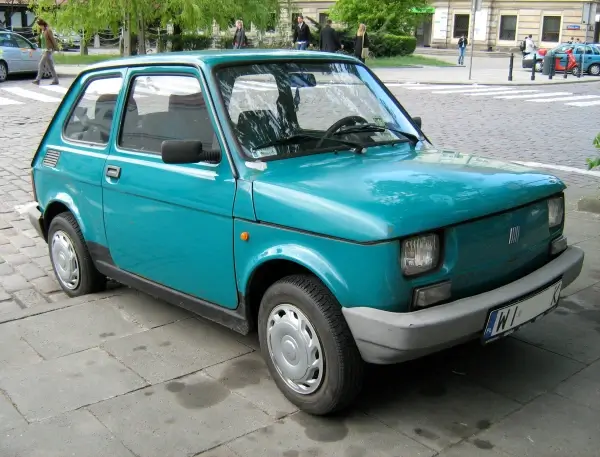
Fiat 126 Maluch Town
A significant number of Fiat 126s were manufactured in Poland as the Polski Fiat 126p. There, it was affectionately termed "Maluch," meaning "The Little One." In 1997, the name was officially recognized. Interestingly, the Fiat 126 has been highlighted by Autocar magazine as one of the cars with the longest production run for a single generation.
Under license, FSM (Fabryka Samochodów Małolitrażowych) in Bielsko-Biała and Tychy produced the Polski Fiat 126p from 1973 to 2000. The car became a sensation in Poland during the 1980s due to its affordability, leading to the widespread use of its "Maluch" moniker. Although it began resembling its Italian version, over time it exhibited distinct features such as an elevated chassis, a different back grille, and clear white front indicator lenses. The model bore the letter "p" to differentiate it from its Italian counterpart.
The Fiat 126P emerged as a symbol of practicality and affordability. It made its mark in Eastern Bloc countries, Hungary, Australia (known there as the FSM Niki), and Cuba, where it's still widely used. In the early 1980s, China witnessed the Fiat 126P's ascendancy, primarily as taxis. Its transition to the private market further boosted its popularity, making it one of China's best-sellers in that decade.

Fiat 126p Chinese Taxi
1987 marked the introduction of the 126 BIS with its water-cooled 704 cc engine, a major development in the Fiat 126P series. This improvement in the engine not only boosted its performance but also its fuel efficiency.
Throughout the 1980s, the car saw continuous refinements, such as upgraded brakes, new wheels, hazard lights, and various facelifts. Its exportation to places like Eastern Bloc nations, Hungary, Australia, and its enduring popularity in Cuba, further attest to its global significance.
The Fiat 126, with its distinctive design and adaptability, stands as a testament to enduring automotive engineering. Over nearly three decades of production, its evolution catered to changing markets and consumer needs, from Italy's bustling streets to China's expanding urban centres. Even as automotive trends shifted, the Fiat 126 remained relevant, especially in regions where practicality and affordability were paramount. Its legacy is not just in its impressive production run, but also in its profound impact on cultures around the world, proving that some designs truly are timeless.
Fiat 126 Fitment Guides

1974 Michelin Fiat 126 Fitment Guide
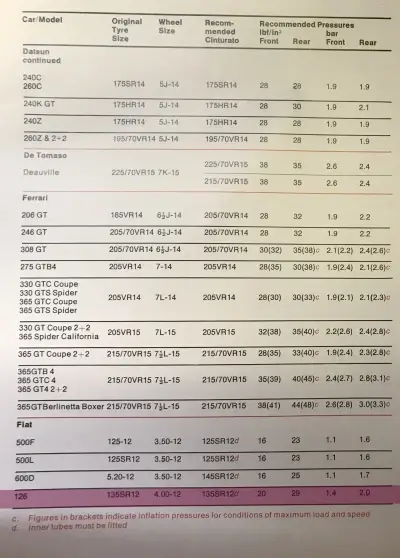
1976 Pirelli Fiat 126 Fitment Guide



